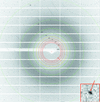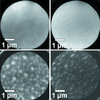issue contents
July 2014 issue

editorial
MATERIALS | COMPUTATION
The growing role of structural studies of materials and of computation in structural science is highlighted.
scientific commentaries
BIOLOGY | MEDICINE
The need for an effective oral therapy for leishmaniasis is addressed through the study of the target N-myristoyltransferase from Leishmania major.
research letters
PHYSICS | FELS
The room-temperature structure of lysozyme is determined using 40000 individual diffraction patterns from micro-crystals flowing in liquid suspension across a synchrotron microfocus beamline.
PDB reference: lysozyme by serial crystallography, 4o34
BIOLOGY | MEDICINE
The PDB_REDO pipeline aims to improve macromolecular structures by optimizing the crystallographic refinement parameters and performing partial model building. Here, algorithms are presented that allowed a web-server implementation of PDB_REDO, and the first user results are discussed.
research papers
NEUTRON | SYNCHROTRON
The mechanism of dense vertically aligned carbon nanotube growth achieved by a recently developed thermal chemical vapor deposition method was studied using synchrotron radiation spectroscopic techniques.
CHEMISTRY | CRYSTENG
Download citation


Download citation


The Long-Range Synthon Aufbau Module (LSAM) concept is utilized in the crystal engineering of 1:1 cocrystals of trichlorophenols and halogen-substituted anilines. NMR studies show the presence of LSAMs in solution and also the sequence of association of hydrogen bonding and π⋯π stacking interations that constitute the LSAMs.
BIOLOGY | MEDICINE
MAT2 complex is expressed in nearly all tissues and is essential in providing the necessary SAMe flux for methylation of DNA and various proteins including histones. X-ray crystallography and solution X-ray scattering structures of this complex show an unexpected stoichiometry, offering a unique mechanism of regulation and thus providing a gateway for structure-based drug design in anticancer therapies including liver disease.
BIOLOGY | MEDICINE
Crystal structures of N-myristoyltransferase with four distinct Leishmania-selective small-molecule inhibitors identify key binding-site residues and suggest strategies to design compounds with increased affinity.



 journal menu
journal menu




 access
access



















